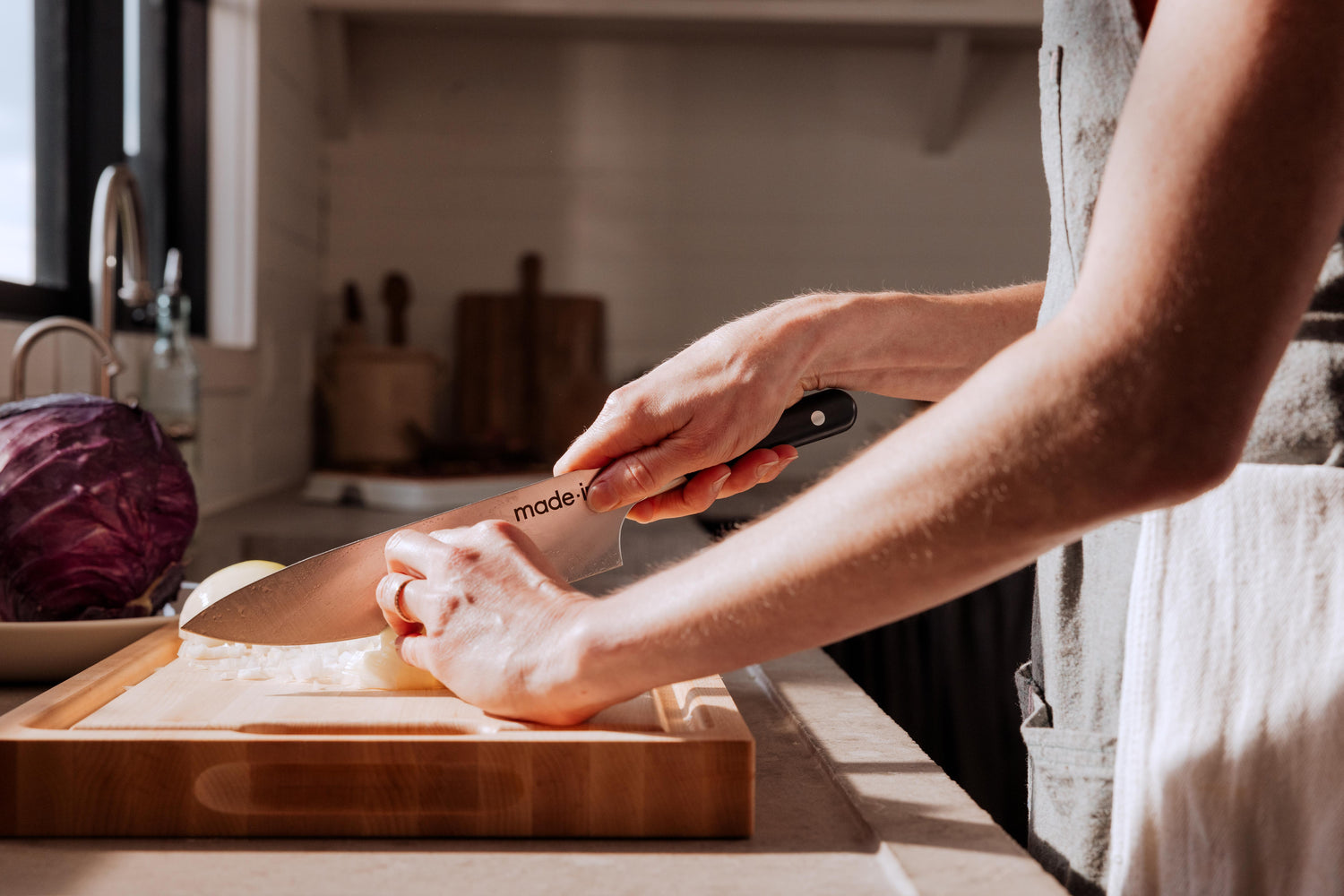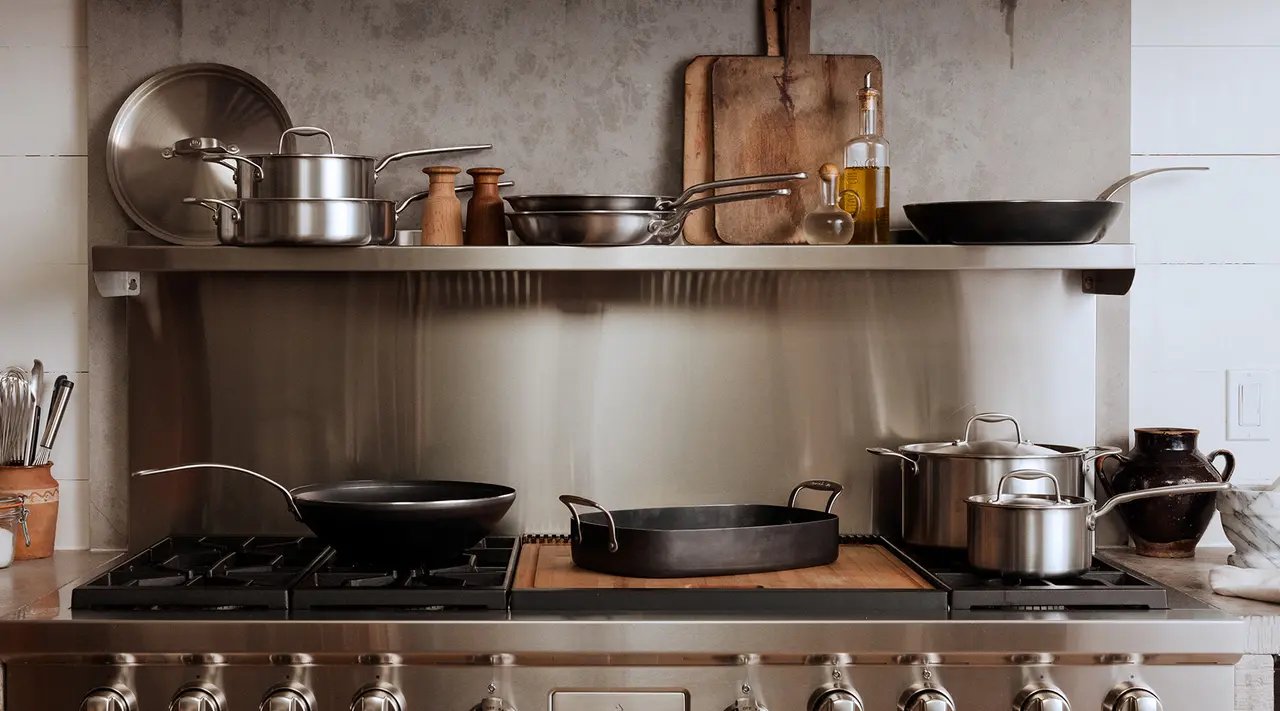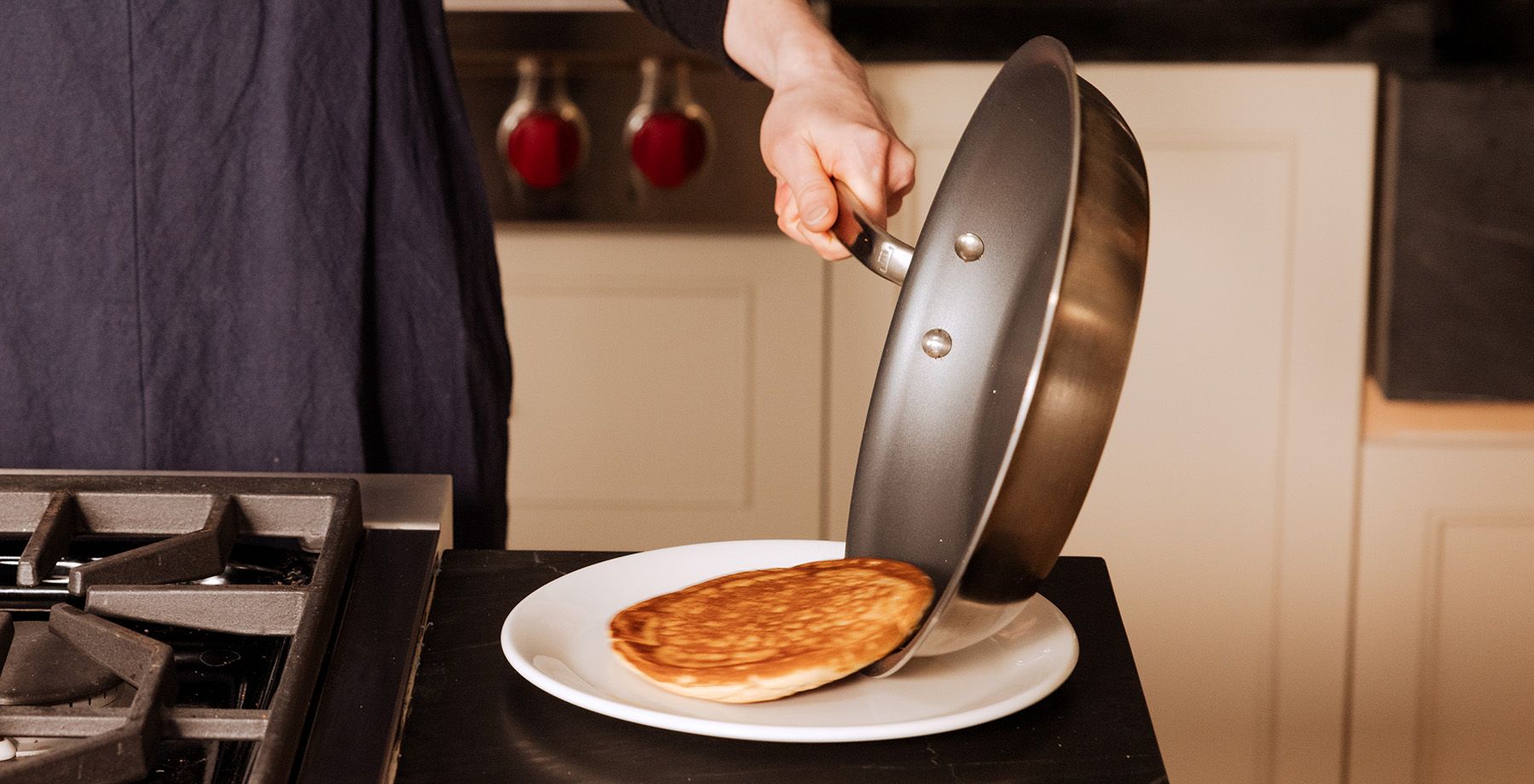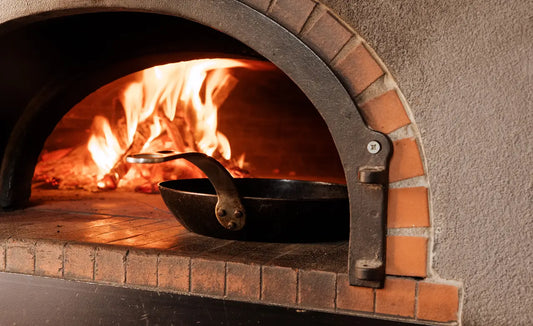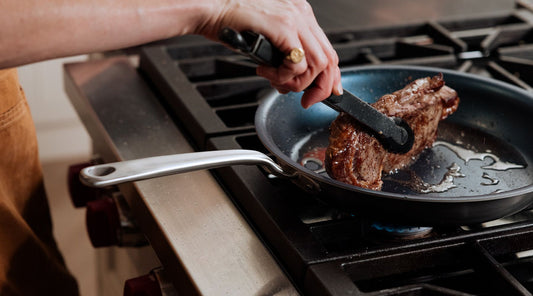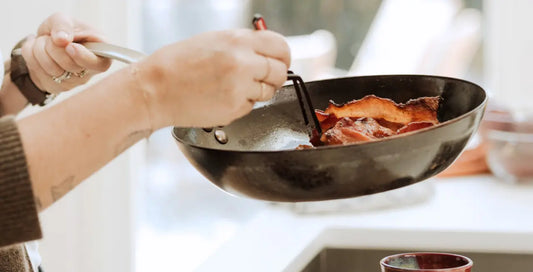With its sleek coating, non stick cookware not only gives us the flaky fish, custardy eggs, and fluffy pancakes of our dreams, but it also makes clean-up almost effortless.
While non stick has earned a permanent place in our kitchen cupboards for its low-maintenance convenience, we know it doesn’t last forever. To help you keep them at peak performance, we’ve pulled together some strategies for avoiding scratching, peeling, and other kinds of damage. Read on to learn how you can keep your favorite pieces in prime condition.
The Do's of Maintaining Non Stick Cookware
Much of proper non stick maintenance comes down to protecting the often-delicate non stick coating. Here’s how to safely store, clean, and cook with your pan.
Clean After Each Use
Are you the type of cook who leaves pans in the sink overnight “to soak”? We see you—and we can relate. When it comes to non stick, however, we’d recommend against doing that. For one, any acidic ingredients left in the pan, like wine or tomatoes, could gradually eat away at the coating if left long enough.
Two, allowing food residue to sit for too long might make it harder to remove without scrubbing aggressively, which can damage your pan's coating. After letting your pan cool, wash it well with soap and water and dry it thoroughly before putting it away.
Be Gentle
It’s safest to use a soft sponge when cleaning your pan, and steer clear of abrasive tools like steel wool. For tackling everyday messes like oil or food residue, warm water and a mild dish soap should be all you need. Occasionally, you may need a wooden or silicone spatula to gently scrape off stuck-on residue.
If you’re dealing with burnt-on food or discoloration that won’t come off with a quick scrub, your next step should be boiling your pan with a mixture of baking soda and vinegar—check out our dedicated guide to cleaning non stick cookware for a more detailed guide.
Another thing to remember is that most non stick cookware is not dishwasher-friendly. The same high-pressure, high-heat environment that helps dishwashers thoroughly clean your dishes can also degrade the coating on your pans, causing it to discolor, warp, and/or peel.
Store Correctly
While we're advocates for hanging our cookware up when we’re not using them, not everyone has the space or kitchen setup for that. You can safely stack your pans in the cupboard as long as you place a dish towel, trivet, oven mitt, or other thick cloth between each pan to prevent scratching.
Make sure to also store them away from anything abrasive, such as silverware, knives, or metal cooking utensils, that could damage the surface.
Use the Right Utensils
Remember: while non stick may be stick-proof, it isn’t scratch-proof. Tools made from wood, silicone, and nylon are all fair game when it comes to cooking with non stick, as they’re sturdy enough to scrape up fond yet soft enough to leave the coating intact. You should never use metal tools on your non stick pan as they can scratch or chip the coating.
Reference our guide to non stick-friendly utensils to learn more about which tools you should, and should not, use on non stick.
The Don'ts of Maintaining Non-Stick Cookware
Now that you know what to do when caring for your non stick, here are a few things you should try to always avoid.

Cooking Over High Heat
While many non stick pans are safe to use on high heat (our Non Stick Collection, for example, is oven-safe up to 500F), exposing lower-quality pans to high heat for prolonged periods of time can cause the coating to degrade and become less non stick.
To prolong the life of your pan as long as possible, it’s good practice to use medium-low heat with non stick. With some pans this may limit what you’re able to make in them, but because our pans feature a 5-Ply Stainless Clad body that heats quickly and evenly without any hot sppts, there’s no reason to crank the heat up—it’s rare that you’ll need to consistently use your pan over the highest heat setting.
Use of Abrasive Products or Utensils
Like we mentioned earlier, metal tools are a no-go when it comes to cooking with non stick. Even when handled gently, your favorite stainless steel fish spatula, tongs, or even a metal serving spoon can scratch or chip the coating and leave permanent damage. That also goes for cleaning tools—avoid using steel wool, even with really stubborn messes. The rough side of a sponge will do the trick.
We’d also recommend using a gentle dish soap for regular washing, opting for the baking soda-and-vinegar method for burnt-on food and stains.
Cleaning with Harsh Chemicals
Aside from the hot, high pressure jets of water, another reason to avoid the dishwasher is the harsh detergents—while these work to get your dishes squeaky clean, they can cause the coating to deteriorate.
3 Tips for Keeping Non Stick Pans in Top Condition

Now that you know all about what to do along with what not to do when it comes to cleaning, storing, and cooking with your non stick pans, here are a few other things to be aware of when caring for your pans.
1. Avoid Overcrowding the Pan
While this is less care-related, another important aspect to note is that you should try not to overcrowd non stick. Since we recommend using your pan on medium-low heat, cramming too much food into your pan can lower the overall temperature and make it much harder—not to mention longer—to thoroughly cook your food.
It’s best to cook in batches to make sure every piece is cooked through and evenly browned, whether you’re searing scallops or throwing together a stir-fry. If you find yourself in need of a larger pan, see which size may be right for you.
2. Regularly Check the Coating
Even with proper care and storage, your non stick pan will eventually start to show its age. And while a little discoloration here and there is normal, coating that’s severely discolored, scratched, and/or peeling definitely is not.
In addition to your pan being less non stick, you risk tiny bits of non stick coating getting into your food. Make sure to check your pan regularly, and replace it when it starts to show extensive damage.
3. Replace the Pan if Necessary
While your enameled cast iron, carbon steel, and stainless clad cookware can last for a lifetime(s), non stick is a different beast. It’s pretty easy to tell when the time has come to replace your pan—if it’s no longer doing its job (i.e., preventing food from sticking) and/or if the coating is visibly peeling, it’s time to make the switch. In some cases, however, you might be able to restore your pan’s non stick ability—here are two methods to try before replacing your pan.
Ceramic pots and pans, which are often marketed as an alternative to traditional non stick, need to be replaced more often. Because ceramic cookware gets its non stick properties from a finite layer of self-sacrificing silicone oil that’s released in small amounts every time the pan is heated, it has a much shorter lifespan than non stick. Comparatively, our Non Stick Cookware is estimated to last 70 times longer than ceramic options.
Ready to Shop?
Cooking with non stick should be incredibly easy and accessible for everyone, and the same goes for maintaining it. The most important thing to remember is to treat your non stick gently, regardless of who makes it. Our advice is to buy the highest quality non stick you possibly can, and then avoid blasting it with high heat, running it through the dishwasher, and subjecting it to abrasive tools and cleaners. It’ll pay you back in dividends.
Our Non Stick Collection is constructed from our Award-Winning 5-ply Stainless Clad, which is then coated with two layers of professional-grade Non Stick. Loved by chefs and home cooks alike, the collection comprises some of the most durable and high-performing non stick pans you can find.

